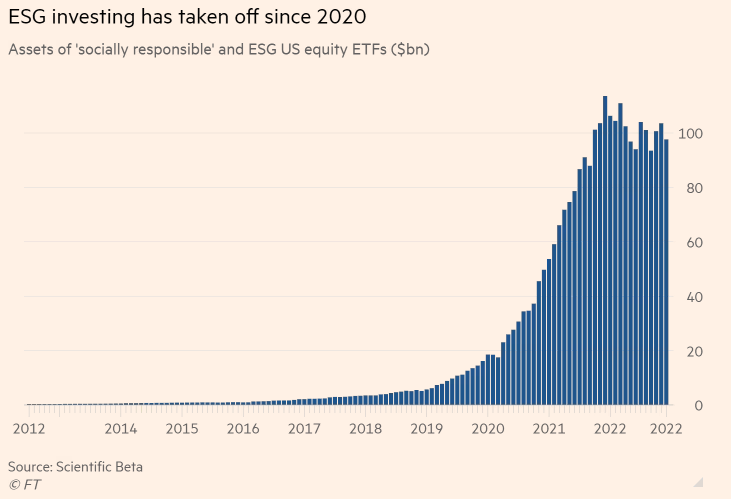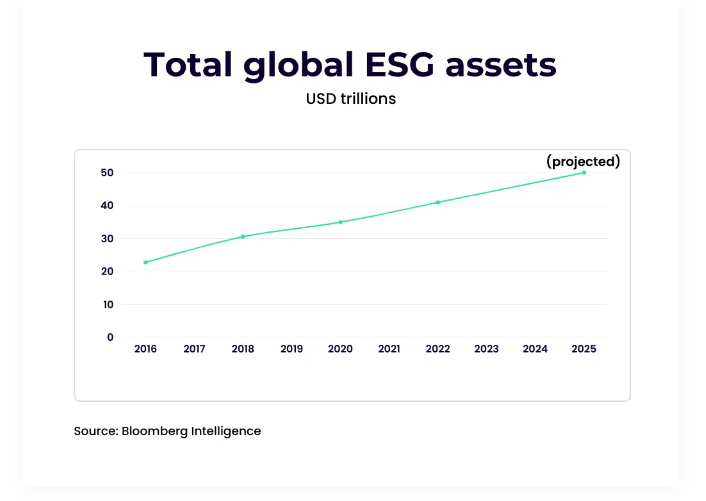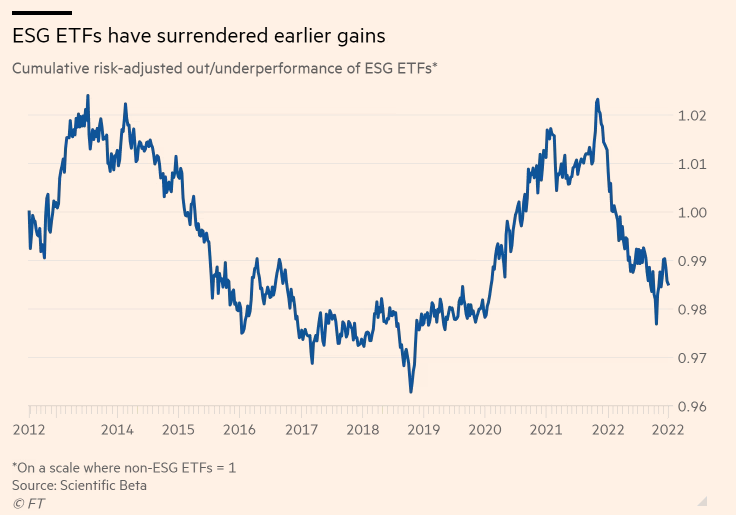and the distribution of digital products.
DM Television
Is ESG Investing Dead? The Rise and Fall of Sustainable Investing
\ There are certain times in the history of investing when trends turn into full market swings, and it’s hard to find a better example than Environmental, Social, and Governance investing strategies. The focus for ESG investing was always on sustainability, corporate responsibility, and ethical governance, and it’s really reshaped how both individuals and institutional investors have allocated capital in the last decade.
\
\ In recent years, though, ESG investing has been turned on its head. There have been many critics of the strategy, especially on performance metrics, and concerns about “greenwashing” have raised massive doubts about the true impacts of these strategies as well. It’s led to the growing debate: Is ESG investing losing its appeal, or is it evolving into a more mature and transparent market?
The Rise of ESG InvestingIn the 1960s, there was a term for investing that was similar, called Socially Responsible Investing (SRI). This was really the beginning of ESG, but SRI investing mainly avoided certain industries, like tobacco and weapons. Over the decades, SRI evolved into the broader ESG framework, which gained significant traction in the 2000s. After the 2008 financial crisis, it grew even further as investors wanted safer, more responsible investment options. And by the 2010s, ESG transformed into a mainstream investment strategy from the niche offering it started as.
\ The COVID-19 pandemic further accelerated growth in the area, as it highlighted how corporations can be important players in addressing global challenges. Maxim Manturov, head of investment research at Freedom24, explained:
\ “The COVID-19 pandemic has made it clear that corporations play a crucial role in solving global problems. Governments alone cannot solve problems such as disease, climate change, workplace safety, or pay inequality based on gender and race. These problems affect people around the world and require the resources and expertise of corporations to address them.
\ So, what makes a stock a good ESG investment? A good ESG company focuses on supporting environmental programmes, caring for its employees, making a positive contribution to local communities and delivering value to shareholders. It is important to validate its reputation through ESG rating agencies such as MSCI and Sustainalytics.
\ Financial performance remains critical to ESG investing. As an ESG investor, you can promote responsible corporate behaviour without sacrificing returns. Institutional investors use ESG ratings to support the high standards of companies, and individual investors can do the same. By investing in leading ESG companies, you support initiatives such as energy efficiency, waste reduction, safer workplaces, and ethical business practices.”
\ Globally, ESG investments are projected to continue with expansion. According to Bloomberg, ESG assets are expected to “reach over $40 trillion by 2030 – over 25% of” global assets under management. Europe is expected to be the leader of this sector with about $18 trillion in ESG assets, while the US may have slower growth due to political and economic challenges.
Challenges Facing ESG InvestingRecent years, however, haven’t been so rosy in the ESG investing space. The biggest challenge has been the issue of ‘greenwashing’, where companies falsely claim or exaggerate their environmental and social credentials to attract those ESG-conscious dollars. Many calls have been made to increase regulatory scrutiny and also standardisation of ESG reporting frameworks so there’s more transparency and accountability. According to Bloomberg Intelligence, this is exactly what will be needed to give more credibility to ESG investments and should help address some concerns about false claims and inconsistent ESG practices.
\ The next issue for ESG investing is financial performance. A report from the Financial Times noted that ESG ETFs have underperformed their traditional counterparts over the past decade annually by 0.2 percentage points. Much was made about the outperformance in 2020 - often cited as ESG’s financial success, but it was largely a statistical outlier driven by sector biases, as ESG tends to be overweight in technology and underweight in energy, which drove much of the year’s success.
\
\ \ Investor sentiment has since been mixed. Some remain committed to ESG for ethical reasons, while others question whether these funds are really delivering long-term returns.
Is ESG Dead or Evolving?Despite the challenges facing ESG investing, it is likely evolving rather than dying as it enters a phase of slower growth and consolidation. It’s natural for any growth area or investing. As the market starts to mature, it needs better regulation and transparency. Once it has that and restores investor confidence, it may continue to grow. The core principles of sustainability, corporate responsibility, and governance aren’t going anywhere, especially in this transparent and data-driven digital age. However, to regain credibility, better analysis and accountability are needed.
\ As for performance, there is likely a reason that ESG strategies are failing to outperform, according to Scientific Beta. They found that many ESG strategies rely on superficial ratings rather than the deep, fundamental analysis of companies - reinforcing the need for better ESG strategies that go beyond simple criteria. Evolution can lead to better outcomes for everyone in this scenario.
ConclusionTo bring it all together, ESG has had significant growth, but now, in its mature stage, there are many challenges. None of which are bigger than greenwashing and underperformance of assets. That being said, ESG is likely not dead - it is evolving. Long-term growth projections, alongside increased regulatory scrutiny, suggest that ESG investing should remain a big part of financial markets in the future.
\ Investors, either ones that want to invest online or offline, should stay informed, understand the limitations of ESG strategies, and be mindful of greenwashing risks.
- Home
- About Us
- Write For Us / Submit Content
- Advertising And Affiliates
- Feeds And Syndication
- Contact Us
- Login
- Privacy
All Rights Reserved. Copyright , Central Coast Communications, Inc.


